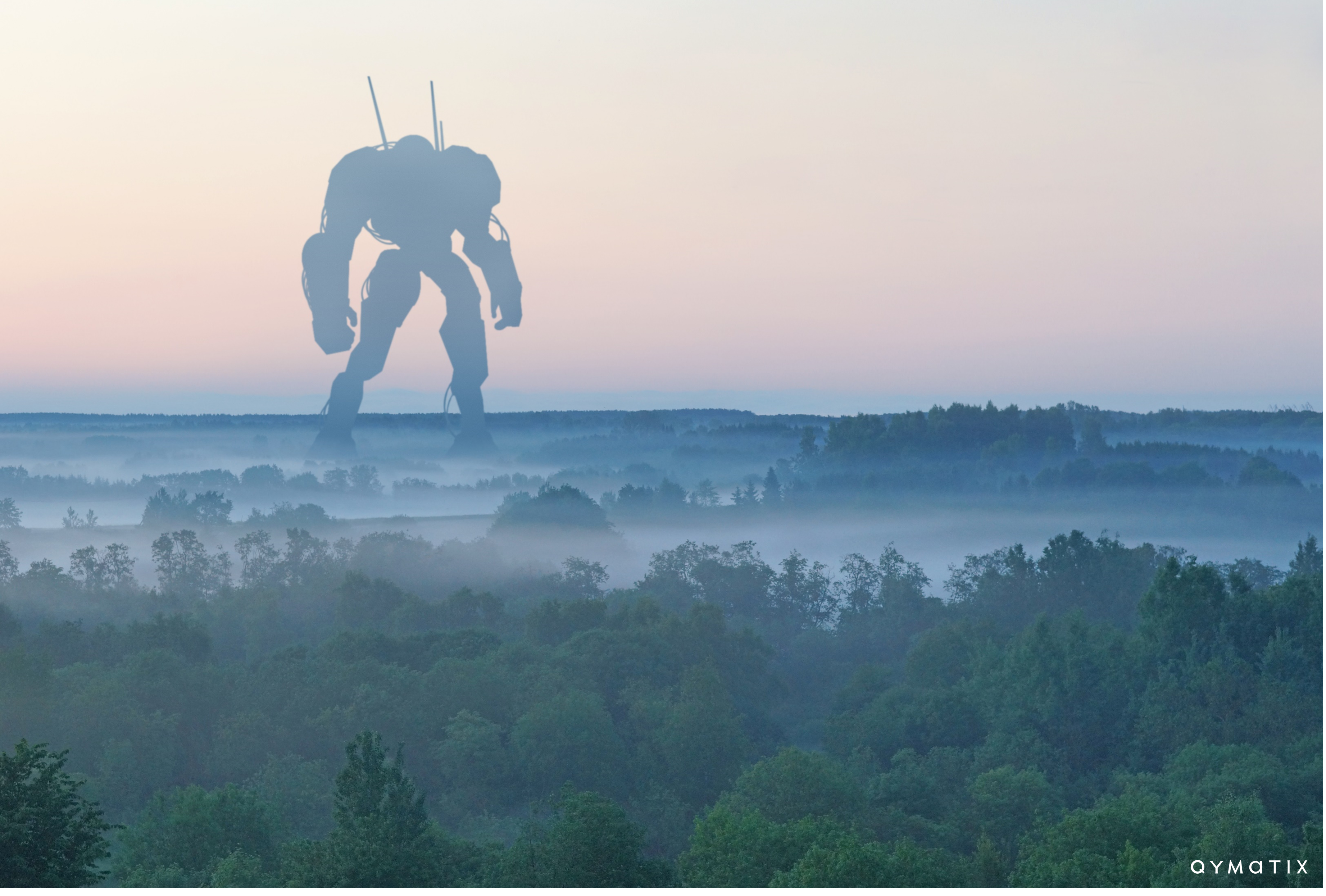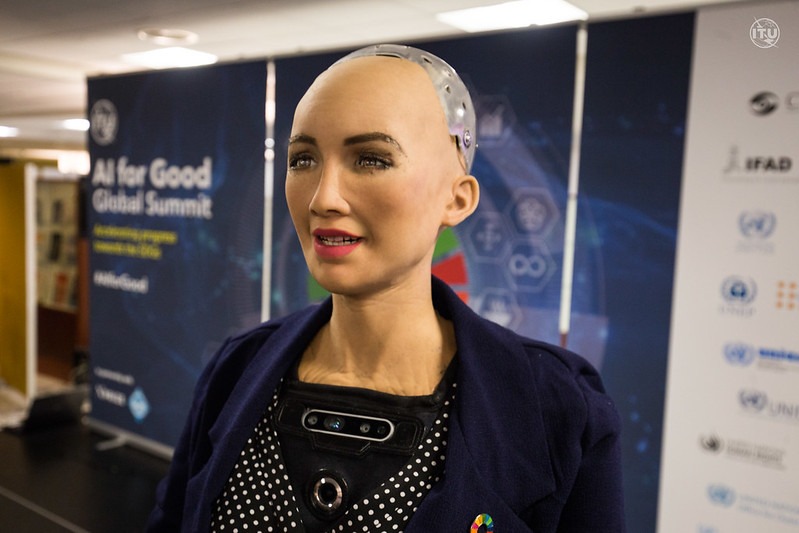Humanoid Robots – A Blessing or a Curse?

Please enter your Email address
Sophia, the first humanoid robot to get citizenship of a country – now, who’s next?
There has recently been a lot of discussions about humanoid robots and if they are a blessing or a curse in our society. Humanoid robots help humans to complete complex tasks which may otherwise be very difficult for us to do.
However, there are also speculations about these robots and if they become too far advanced that they would replace humans in the workplace, for example. Lots of scenarios in the field of science fiction showcase the possible reality that robots would lead us to the ultimate end.
Okay, back up for a second…what are Humanoid Robots?
With the use of artificial intelligence, humanoid robots are programmed to think and act like humans. It is through interactions with humans that robots become smarter and more efficient. This means that they respond to situations faster and can perform basic tasks more naturally and have better facial recognition. Robots can recognize patterns in human behavior and imitate phrases, facial expressions, and gestures of other people.
Who is Sophia?

Link: https://www.flickr.com/photos/itupictures/27254369347/in/photostream/
Sophia is designed for the purposes of research, entertainment, and education. According to David Hanson, an American roboticist and one of Sophia’s creators, Sophia is “better, faster, and smarter.” She was designed by Hanson Robotics in Hong Kong. She is the first robot to get citizenship of Saudi Arabia in 2017. Sophia has traveled to over 25 countries to give speeches, presentations, and engage in conversations.
Her ability to display complex emotions and to engage in conversations is what sparked the interest of many people. Even though she is able to talk to other people, many of the conversations are preplanned to get her started off and on the right conversation track. This means that she sometimes generates responses according to a script or generates her own responses depending on the conversation that is taking place at hand.
To create Sophia, artificial intelligence combines the use of neural networks, machine perception, processing of conversational language, and motor and cognitive control. Machine perception means that Sophia can recognize faces, understand human feelings, and note down hand gestures that is then later code that into her memory. Sophia understands conversational language through the interactions that she has with other people. Motor and cognitive control takes care of how she acts and reacts during conversations.
Sophia – A Talented Artist
Sophia has shown quite a lot of talent in the entertainment industry. In 2017, the Tonight Show host, Jimmy Fallon met Sophia the robot and learned how artificial intelligence is used to create Sophia. He learned how robots can process visual and auditory data and process it to converse with other people. In 2018, she made another appearance on the show and performed a karaoke with the host using her AI singing voice. This was the first robot-human duet in the show (2:22 min).
You are currently viewing a placeholder content from YouTube. To access the actual content, click the button below. Please note that doing so will share data with third-party providers.
Not only did Sophia develop the artistic talent of singing, but also of self-portrait painting. Along with artist Andrea Banaceto, she developed a self-portrait painting of herself. To make the self-portrait she was first fed information by the artist through neural networks. An image of Sophia was first made by the artist, and then based on the information learned, she made a self-portrait of herself according to her own interpretation. It is said that she made her own artwork without human intervention. The artwork proved to be a success as it was sold through an auction.
Sophia the humanoid robot is the first robot to be granted citizenship of Saudi Arabia. She is the first robot to do a Karaoke with Tonight’s Show host, Jimmy Fallon. She is the first robot innovation ambassador of the United Nations Development program. That is a lot of firsts…if this is just the beginning, who knows what is next in store?
What Scientific Advancements in the Field of Robotics help make our lives easier?
Other humanoid robots are also being developed by various companies. An example of a recent scientific innovation is the working prototype of Optimus, Tesla’s humanoid robot is underway and may be ready by September 2022. Optimus’s purpose will be to perform tasks in the manufacturing operations sector. Elon Musk has planned for the robot to learn the tasks slowly and gradually with it performing simple tasks in the beginning and then perform more complex tasks. By helping to perform tasks in the manufacturing operation sector, Optimus would help to lift the heavy burden of the many tasks in the sector which would be difficult to achieve for humans.
Another notable robot to mention is the Ocean One Robot developed by MEKA robotics. This robot makes use of haptic technology (that is, using touch) to dive to ocean depths. Ocean One is an underwater humanoid robot that has the ability to explore and perform tasks in the ocean. It has the capability to go to deep depths, something which may otherwise be difficult for a human to do. Ocean One aids in complex tasks such as helping in the discovery of artifacts and assembling structures.
Ethical Implications and Legal Actions That Should be Considered
Humanoid robots help us to manage difficult tasks which may otherwise be too dangerous or complex for humans. However, legal restrictions must be implemented, and appropriate boundaries should be determined to ensure that situations do not go out of hand. Legal restrictions should outline the extent to which humanoid robots have the freedom to think, act, and behave to allow for seamless cooperation and coordination with humans. In the workplace, humanoid robots can help to complete tasks with greater effectiveness and efficiency. Ongoing discussions are still being held by experts to decide about the appropriate legal restrictions that consider ethical aspects regarding humanoid robots. A big topic for example is the topic about AI and responsibility.
CALCULATE NOW THE ROI OF QYMATIX PREDICTIVE SALES SOFTWARE
Humanoid Robots, a Blessing or a Curse?
Sophia is the epitome of what is both fascinating and terrifying. Many fear that the advancements in technology may go too far. If robots become too advanced, they may also have the ability to threaten humans because they would be smarter, faster, and more efficient. However, we should also feel rest assured that if the appropriate laws are put in place, then we may be able to avoid extreme situations from taking place.
We must remember that artificial intelligence will help us to perform complex tasks, artificial intelligence will not replace people so easily.
So, should you be afraid or enlightened by these advancements?
Do you want to learn more about artificial intelligence? Then you can visit our Sales AI Academy in German to learn more about this topic and its applications.
We look forward to seeing you there!
I WANT PREDICTIVE ANALYTICS FOR B2B SALES.
Further Read:
The Jakarta Post: Meet Sophia: The first robot declared a citizen by Saudi Arabia
The Tonight Show Starring Jimmy Fallon: Sophia the Robot and Jimmy Sing a Duet of “Say Something”
Fred Lambert: Elon Musk says Tesla may have a working humanoid robot prototype by September 30
Stanford University: Ocean One Robot
Keith Estiler: Sophia the Robot’s Hand-Painted NFT Self-Portrait Fetches Over $700,000 USD